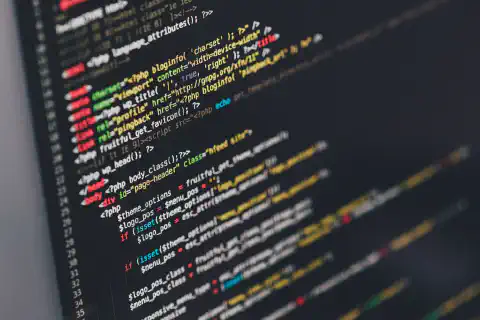Secure Coding Standards for Python: Best Practices

Table of Contents
Best Practices for Secure Coding Standards in Python
1. Input Validation
Input Validation
User input is often a significant source of security risks. Input validation is the process of verifying that the user input meets the expected criteria and is safe to use in the application.
For example, when a user enters a credit card number, the input should only contain digits and no special characters. To validate the input, developers can use built-in functions such as isdigit() or regular expressions to ensure that the input meets the expected criteria.
import re
def validate_input(input_string):
"""
Function to validate input using regular expressions.
"""
pattern = r"^[0-9]+$"
if re.match(pattern, input_string):
return True
else:
return False
2. Avoid Using Unsafe Functions
Python has several functions that can be vulnerable to security issues if not used carefully. Functions such as exec(), eval(), and pickle can allow attackers to execute malicious code. Developers should avoid using these functions or use them with caution by restricting input parameters and using them only when necessary.
For example, instead of using eval() function to convert a string to an integer, developers should use the int() function.
# Instead of using eval function
x = eval('10')
# Use int function
x = int('10')
3. Use Cryptography Libraries
Cryptography libraries such as
cryptography
and
pycryptodome
provide a secure way to perform encryption and decryption operations. Use these libraries instead of creating custom encryption methods, which may be prone to vulnerabilities.
For example, to encrypt a password, use the
cryptography
library as follows:
from cryptography.fernet import Fernet
def encrypt_password(password):
"""
Function to encrypt password using cryptography library.
"""
key = Fernet.generate_key()
f = Fernet(key)
encrypted_password = f.encrypt(password.encode('utf-8'))
return encrypted_password
password = "mypassword"
encrypted_password = encrypt_password(password)
The Fernet object generates a key, which is used to encrypt the password using the encrypt() method.
4. Follow the Principle of Least Privilege
The principle of least privilege is a security best practice that restricts users or processes to the minimum level of access necessary to perform their functions. Developers should follow this principle when writing code to minimize the impact of security breaches.
For example, if an application requires read-only access to a database, it should use a database account with read-only permissions instead of an account with full permissions. This reduces the risk of an attacker exploiting the application to modify or delete data.
5. Keep Libraries and Frameworks Updated
Libraries and frameworks can contain security vulnerabilities that can be exploited by attackers. Developers should keep their libraries and frameworks updated to the latest version to avoid potential security issues.
For example, if the application uses a third-party library, such as
Requests
, which has a security vulnerability, the developer should update to the latest version of the library that addresses the vulnerability.
6. Use a Static Code Analyzer
A static code analyzer is a tool that can identify potential security vulnerabilities in the code before it is executed. Use tools such as
bandit
,
Pylint
, and
Pyflakes
to detect security issues in the code and fix them before deployment.
For example,
bandit
is a popular static code analyzer that examines Python code for potential security vulnerabilities. It can detect issues such as hard-coded passwords, SQL injection, and use of unsafe functions.
7. Use Secure Coding Practices for Web Applications
Web applications are vulnerable to several security risks such as cross-site scripting, SQL injection, and command injection. Developers should follow secure coding practices such as input validation, output encoding, and parameterized queries to ensure that web applications are secure.
For example, when writing SQL queries, use parameterized queries instead of concatenating user input with the query. Parameterized queries prevent SQL injection attacks by treating user input as data rather than executable code.
# Instead of this
query = "SELECT * FROM users WHERE username = '" + username + "';"
# Use parameterized query
query = "SELECT * FROM users WHERE username = %s;"
cursor.execute(query, (username,))
Developers should also validate all user input, encode output, and use HTTPS to encrypt data transmitted over the network.
Secure Coding Standards for Python Frameworks
Python frameworks such as Django and Flask have their secure coding standards. Developers should follow these standards when developing applications using these frameworks. Here are some secure coding standards for Python frameworks:
1. Django
Django is a popular web framework for Python. Here are some secure coding standards for Django :
- Use Django ’s built-in authentication system instead of creating a custom authentication system.
- Use Django ’s built-in password hashing functions instead of creating custom password hashing methods.
- Use Django ’s template system to ensure that the output is secure and free from cross-site scripting vulnerabilities.
For example, to use
Django
’s built-in password hashing function, use the make_password() function from the django.contrib.auth.hashers module.
from [Django](https://www.djangoproject.com/).contrib.auth.hashers import make_password
password = "mypassword"
hashed_password = make_password(password)
2. Flask
Flask is a micro web framework for Python. Here are some secure coding standards for Flask :
- Use Flask ’s built-in session management system to ensure secure session handling.
- Use
Flask
’s
MarkupSafelibrary to ensure that the output is secure and free from cross-site scripting vulnerabilities. - Use
Flask
’s
WTFormslibrary to handle user input validation and ensure that input is free from security risks. - Use
Flask
’s
Blinkerlibrary for secure signal handling.
For example, to use
Flask
’s
MarkupSafe
library, import it and use it to escape HTML tags from the output.
from markupsafe import escape
@app.route('/')
def hello():
name = "<script>alert('xss');</script>"
return 'Hello, ' + escape(name)
Using your knowledge and what to do now?
Start implementing these best practices in your Python code today to minimize the risk of security breaches and protect sensitive data. You can begin by identifying areas in your code that are susceptible to security risks, such as input validation, password hashing, and session management. You can then implement best practices like the ones discussed in this article to secure your code. For example, you can use Python’s built-in regular expressions to validate user input or use a secure password hashing library like
bcrypt.Review your existing codebase for potential security vulnerabilities and use static code analyzers like
bandit,Pylint, andPyflakesto detect and fix any issues. You can also use manual code review to identify security issues that static code analyzers may not detect. Look for common vulnerabilities like SQL injection, cross-site scripting, and input validation issues. Once you identify potential security vulnerabilities, you can use best practices to fix the issues.Stay up-to-date with the latest security best practices and tools to ensure that your code remains secure and free from vulnerabilities. Follow security blogs, attend conferences, and participate in online communities to stay up-to-date with the latest security trends and practices. Keep your libraries and frameworks up-to-date to ensure that you’re using the latest secure versions.
Join online communities and attend events where you can learn from experts and other developers on secure coding practices for Python. Look for online communities and forums where you can discuss security issues with other developers, learn about new security trends, and share your own knowledge. Attend events like conferences, webinars, and meetups to learn from security experts and other developers.
Share these best practices with your team or colleagues to promote a culture of security awareness and encourage others to adopt secure coding practices in their Python projects. Organize security training sessions, share articles and resources on secure coding practices, and lead by example by implementing these best practices in your own code. By promoting a culture of security awareness, you can help ensure that your team’s code is secure and free from vulnerabilities.
Conclusion
Secure coding standards are essential to ensure that code is secure, reliable, and free from vulnerabilities. Python is a popular programming language that requires developers to follow secure coding standards to prevent security risks. By following best practices such as input validation, avoiding unsafe functions, using cryptography libraries, and keeping libraries and frameworks updated, developers can ensure that their code is secure and free from vulnerabilities. When using Python frameworks, developers should follow the secure coding standards recommended by the framework.
Adopting secure coding standards is a continuous process that requires developers to stay updated with the latest security best practices and tools. By incorporating secure coding standards into the development process, developers can minimize the risk of security breaches and protect sensitive data.






